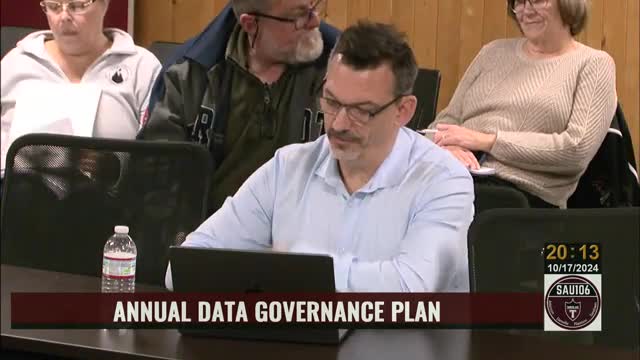Board hears assessment calendar; district emphasizes importance of 95% state participation and iReady use for early intervention
October 17, 2024 | Timberlane Regional School District, School Districts, New Hampshire
This article was created by AI summarizing key points discussed. AI makes mistakes, so for full details and context, please refer to the video of the full meeting. Please report any errors so we can fix them. Report an error »

District leaders reviewed the annual assessment calendar at the Oct. 17 meeting, distinguishing between state accountability testing and locally used benchmarking tools while underscoring the 95% participation requirement for state assessments.
The calendar is important because state accountability data influence federal and state reporting and funding, while local benchmark tools such as iReady are used to identify students who need targeted instructional support earlier in the year.
Assistant Superintendent Sandy (presenting) explained that the SAT is the state accountability test for 11th graders and that the PSAT is administered locally to 11th graders as a preparatory and scholarship-eligibility opportunity; she said PSAT administration on a school day is an internal district decision. The district uses iReady as a universal screener with fall, winter and spring benchmark windows; iReady also includes an instructional "pathway" that places students on personalized lessons after the benchmark, and teachers can form small groups and assign targeted practice. "I Ready also has an instructional platform," Sandy said, describing how students are placed on personalized pathways and teachers can assign targeted work.
Administrators emphasized the participation threshold: state accountability rules require districts to achieve at least 95% participation for each grade level; scores below that threshold are treated as zeros for accountability calculations and can materially change reported proficiency. Sandy said the district honors parental choice but seeks conversations with families when exemptions are requested so parents understand the consequences for accountability calculations and federal reporting.
Board members asked about timing and comparability. One member observed that results from state assessments may arrive months after testing and asked whether earlier local measures make the state results less actionable; administration replied that local instruments like iReady are designed to provide timely diagnostic information teachers can use to intervene during the school year, while the state results serve accountability and broader program-tracking purposes.
No board action was taken; the item was informational with administrators planning to return results and further analysis when state results are released.
The calendar is important because state accountability data influence federal and state reporting and funding, while local benchmark tools such as iReady are used to identify students who need targeted instructional support earlier in the year.
Assistant Superintendent Sandy (presenting) explained that the SAT is the state accountability test for 11th graders and that the PSAT is administered locally to 11th graders as a preparatory and scholarship-eligibility opportunity; she said PSAT administration on a school day is an internal district decision. The district uses iReady as a universal screener with fall, winter and spring benchmark windows; iReady also includes an instructional "pathway" that places students on personalized lessons after the benchmark, and teachers can form small groups and assign targeted practice. "I Ready also has an instructional platform," Sandy said, describing how students are placed on personalized pathways and teachers can assign targeted work.
Administrators emphasized the participation threshold: state accountability rules require districts to achieve at least 95% participation for each grade level; scores below that threshold are treated as zeros for accountability calculations and can materially change reported proficiency. Sandy said the district honors parental choice but seeks conversations with families when exemptions are requested so parents understand the consequences for accountability calculations and federal reporting.
Board members asked about timing and comparability. One member observed that results from state assessments may arrive months after testing and asked whether earlier local measures make the state results less actionable; administration replied that local instruments like iReady are designed to provide timely diagnostic information teachers can use to intervene during the school year, while the state results serve accountability and broader program-tracking purposes.
No board action was taken; the item was informational with administrators planning to return results and further analysis when state results are released.
View full meeting
This article is based on a recent meeting—watch the full video and explore the complete transcript for deeper insights into the discussion.
View full meeting
